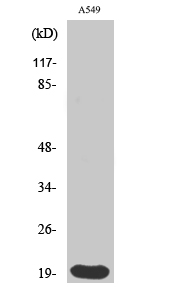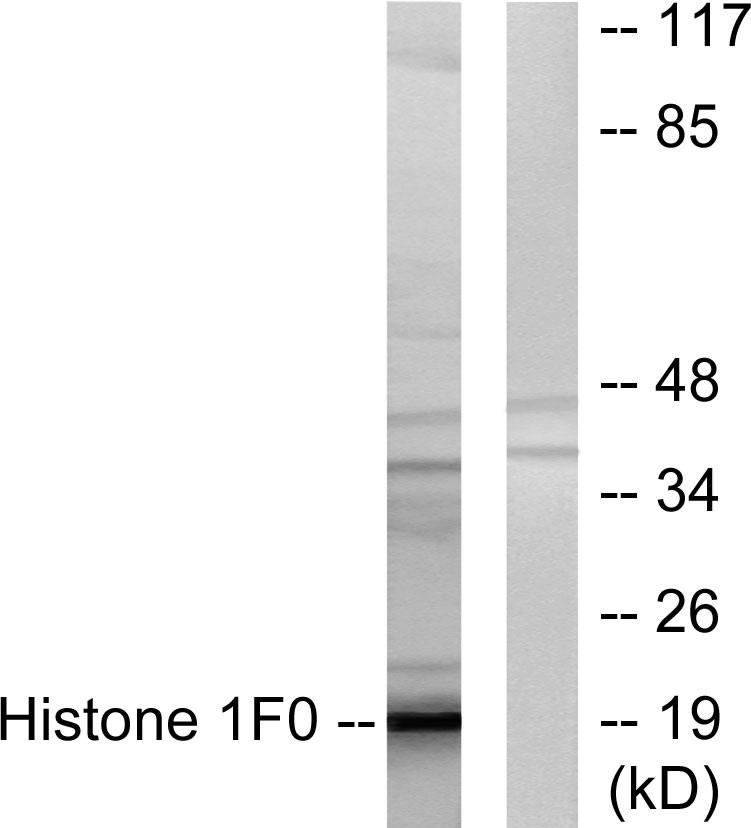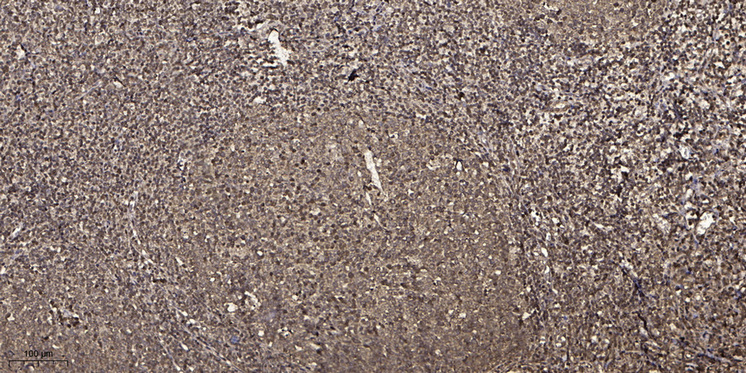Histone 1.0 Polyclonal Antibody
- Catalog No.:YT2144
- Applications:WB;IHC;IF;ELISA
- Reactivity:Human;Rat;Mouse;
- Target:
- Histone 1.0
- Gene Name:
- H1F0
- Protein Name:
- Histone H1.0
- Human Gene Id:
- 3005
- Human Swiss Prot No:
- P07305
- Mouse Swiss Prot No:
- P10922
- Immunogen:
- The antiserum was produced against synthesized peptide derived from human Histone 1F0. AA range:71-120
- Specificity:
- Histone 1.0 Polyclonal Antibody detects endogenous levels of Histone 1.0 protein.
- Formulation:
- Liquid in PBS containing 50% glycerol, 0.5% BSA and 0.02% sodium azide.
- Source:
- Polyclonal, Rabbit,IgG
- Dilution:
- WB 1:500 - 1:2000. IHC 1:100 - 1:300. ELISA: 1:40000.. IF 1:50-200
- Purification:
- The antibody was affinity-purified from rabbit antiserum by affinity-chromatography using epitope-specific immunogen.
- Concentration:
- 1 mg/ml
- Storage Stability:
- -15°C to -25°C/1 year(Do not lower than -25°C)
- Other Name:
- H1F0;H1FV;Histone H1.0;Histone H1';Histone H1(0)
- Observed Band(KD):
- 28kD
- Background:
- Histones are basic nuclear proteins that are responsible for the nucleosome structure of the chromosomal fiber in eukaryotes. Nucleosomes consist of approximately 146 bp of DNA wrapped around a histone octamer composed of pairs of each of the four core histones (H2A, H2B, H3, and H4). The chromatin fiber is further compacted through the interaction of a linker histone, H1, with the DNA between the nucleosomes to form higher order chromatin structures. This gene is intronless and encodes a replication-independent histone that is a member of the histone H1 family. [provided by RefSeq, Oct 2015],
- Function:
- function:Histones H1 are necessary for the condensation of nucleosome chains into higher order structures. The H1F0 histones are found in cells that are in terminal stages of differentiation or that have low rates of cell division.,induction:Both the unedited and the RNA edited versions are induced by butyrate (at protein level). Only RNA edited version is induced by DTT, vinblastine or TNF (at protein level).,online information:Histone H1 entry,PTM:Phosphorylated upon DNA damage, probably by ATM or ATR. Phosphorylated on Ser-17 in RNA edited version.,RNA editing:Partially edited. In approximately 3.6% of the mRNA molecules, a new initiator methionine is created by a single uridine insertion in the 5'-UTR, causing an N-terminal extension of 99 amino acids. The existence of the RNA edited version is supported by direct protein sequencing by MS/MS of the following peptides specific to that
- Subcellular Location:
- Nucleus . Chromosome . The RNA edited version has been localized to nuclear speckles. During mitosis, it appears in the vicinity of condensed chromosomes.
- Expression:
- Colon,Epithelium,Placenta,
- June 19-2018
- WESTERN IMMUNOBLOTTING PROTOCOL
- June 19-2018
- IMMUNOHISTOCHEMISTRY-PARAFFIN PROTOCOL
- June 19-2018
- IMMUNOFLUORESCENCE PROTOCOL
- September 08-2020
- FLOW-CYTOMEYRT-PROTOCOL
- May 20-2022
- Cell-Based ELISA│解您多样本WB检测之困扰
- July 13-2018
- CELL-BASED-ELISA-PROTOCOL-FOR-ACETYL-PROTEIN
- July 13-2018
- CELL-BASED-ELISA-PROTOCOL-FOR-PHOSPHO-PROTEIN
- July 13-2018
- Antibody-FAQs
- Products Images

- Western Blot analysis of various cells using Histone 1.0 Polyclonal Antibody diluted at 1:2000

- Western blot analysis of lysates from A549 cells, using Histone 1F0 Antibody. The lane on the right is blocked with the synthesized peptide.

- Immunohistochemical analysis of paraffin-embedded human tonsil. 1, Antibody was diluted at 1:200(4° overnight). 2, Tris-EDTA,pH9.0 was used for antigen retrieval. 3,Secondary antibody was diluted at 1:200(room temperature, 45min).



